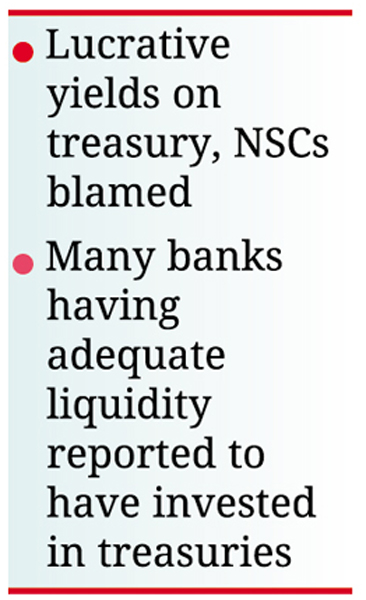 The interbank call money rate hit its new high at 9.43 per cent on Sunday, indicating a persistent liquidity problem on the money market.
The interbank call money rate hit its new high at 9.43 per cent on Sunday, indicating a persistent liquidity problem on the money market.
The highest bid for the overnight borrowing rate on the day stood at 10 per cent and the lowest at 8.0 per cent, averaging 9.43 per cent.
The day's total transaction stood at Tk 34.18 billion in 72 deals.
Such a high rate of call money has not been seen in the last five years at least, according to the people in the banking industry and Bangladesh Bank.
They viewed that the banks were now investing more in the high-yielding government treasury instruments, and trying to meet their daily needs through the overnight borrowings.
Bangladesh Bank stopped the 'devolvement' or printing money in August last year. Since then, the call money rate started increasing, said a central banker.
In the meantime, the yield on the government treasury rose to around 12 per cent, the highest investment earnings in Bangladesh. The interest rate on National Saving Certificates is now around 11 per cent.
People in the banking industry said the banks took the overnight loans at the highest rate on the day as the market is tight.
"The market has a liquidity shortage and, simply for this reason, the rate has jumped," said Mr. Syed Mahbubur Rahman, managing director and CEO of the Mutual Trust Bank or MTB.
The sharp rise in the call-money rate indicates a higher cost of emergency funds for some banks, notwithstanding the prevalence of some liquidity surplus in the overall system.
Banks extend overnight credit to one another for a day to fill the asset-liability mismatch or to meet the sudden demand for funds, comply with the statutory CRR and SLR requirements.
"Many banks having adequate liquidity have invested in government treasuries which are risk-free and the yield is much higher than in previous periods," said the MTB CEO.
Managing director and CEO of Dhaka Bank Emranul Huq told the FE that they have raised the deposit rates but there is hardly any expected result.
"To attract liquidity, we have raised interest rates on FDRs, even around 10 per cent, but we are not getting expected responses from the depositors."
He thought it's high time to identify the reason behind the liquidity shortage in the market. "Where has the liquidity gone?" he questioned.
"We need to identify the reasons and take measures accordingly as such a liquidity crisis will pose a threat to the economy," Mr. Huq said.
jasimharoon@yahoo.com